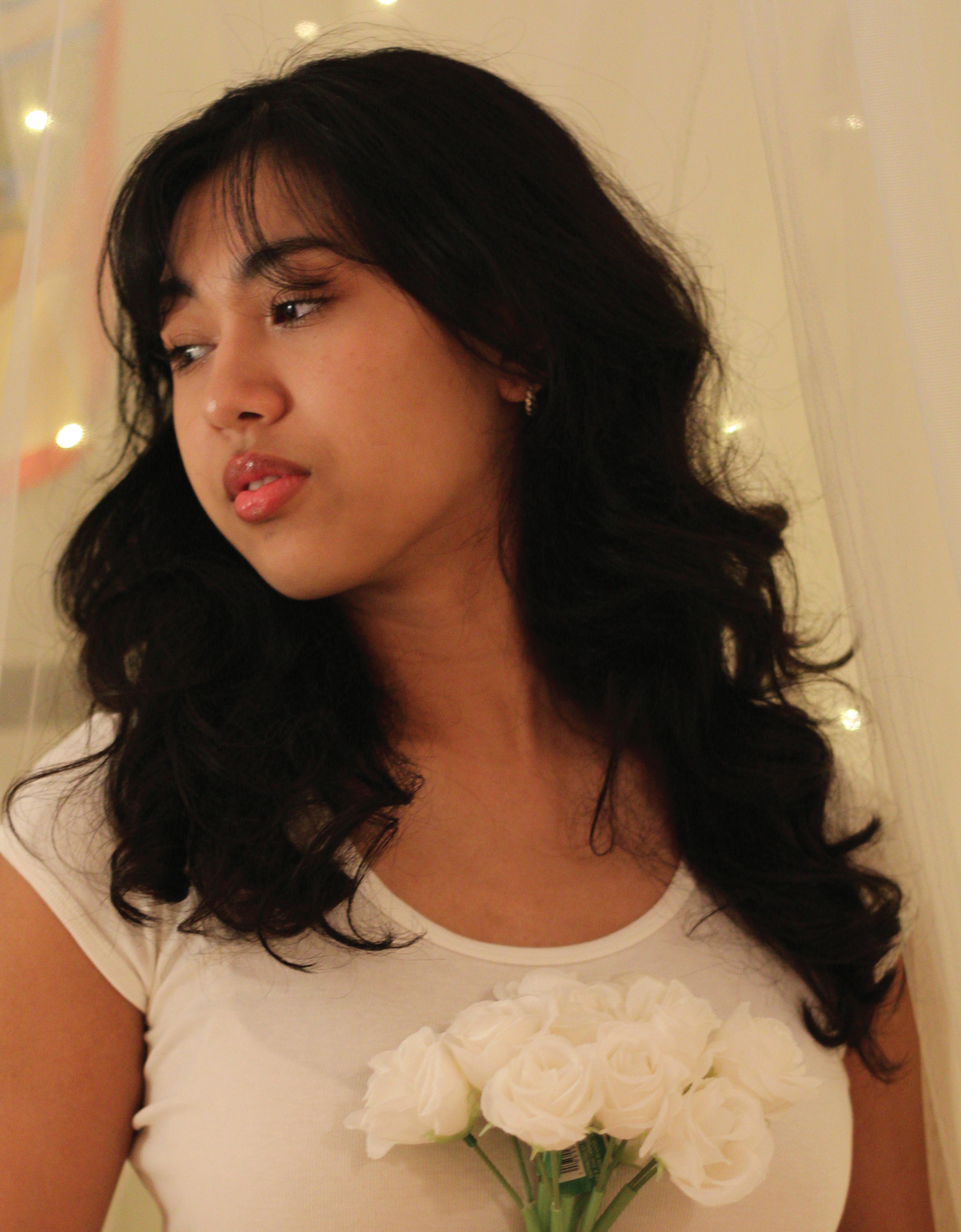
summer 2024 [proof]

about
Published three times annually, [proof] is Palo Alto High School’s fine arts and photography magazine, working to showcase Paly’s vibrant and diverse artistic community, covering a variety of styles and backgrounds.
from the editor
Hello readers! In our final issue of the 2023-2024 school year, we delve into the beauty of ordinary life. Whether it’s embarking on your own photography journey in “Photography on a Budget, ” uncovering the unique stories behind the citizens and homes of Palo Alto in “Humans of Palo Alto” and “501 Hale St.” or the crazy history of Palo Alto High School’s fashion, there are a lot of hidden gems to explore. On the cover is Caroline Jittipun, a senior at Paly, demonstrating the power of color in art and photography through our unconscious associations. “Color Theory ‘’ dives into how this can be used to manipulate the viewer’s perception of one’s work. We are excited to showcase our work and hope you enjoy it!
— kat farrell
summer 2024 2
photo by kofi kim
DRINK UP: Caretakers in the Retei elephant sanctuary in North Kenya care for orphaned elephants that must be fed milk every three hours.

editor-in-chief
kat farrell
design editor amani fossati-moiane staff
amily zhang arjun jindal cailey quita hadrien de martel joshua watterson mihika sridhar
saanvi garg william xue
adviser
paul kandell — pkandell@pausd.org
mission statement
[proof] Magazine, Palo Alto High School’s student-run fine arts and photography magazine, is dedicated to showcasing student artwork, photography, and facilitating creative discussion about arts.
publication policy
[proof] Magazine is published by the students in Palo Alto High School's Magazine Incubator class and is a designated limited open forum for student expression and discussion of issues of concern to its readership. [proof] is distributed to its readers and student body at no cost. letters to the editors
We welcome letters to the editors, but reserve the right to edit all letters for grammar, length, potential libel, invasion of privacy, and obscenity. Send all letters to proof.paly@gmail.com or 50 Embarcadero Road, Palo Alto, CA, 94301.
advertising
The staff publishes advertisements with signed contracts when not deemed inappropriate for publication by editors. For more information on advertising with [proof], please email palyjournalismincubator@gmail.com
printing & distribution
[proof] is printed three times, with issues seasonally (winter, spring, and summer), by aPrintis in Pleasanton, CA. Issues are handed out by [proof] and other Incubator staff during school. Issues are available online at https://issuu.com/proof-paly.
ai policy
[proof] does not condone nor use artificial intelligence in any part of its creative process.
[proof] magazine 3
[contents]

summer 2024 4

photography on a budget 509 hale st. humans of palo alto color theory threads through time saltburn cinematics through the lense 6 8 10 14 12 16 17 18 [gallery] art by renny argast [proof] magazine 5
Photography
For many, photography may seem like a costly hobby, but there are still many ways to dive into photography without burning a hole in your wallet.
1. Use Second-Hand Equipment:
It’s easy to get caught up in the hype of new cameras equipped with high-tech shutters, displays, and lenses. Yet, it’s worth remembering that some of the most iconic photos ever captured were taken on old cameras. Take, for instance, Neil Leifer’s image of Muhammad Ali towering over Sonny Liston, a victorious stance frozen in 1965 but still captivating today. While newer cameras can streamline the process of snapping an amazing shot, cheaper alternatives are both viable and accessible. Benjamin Patel, a photography student, believes that the price and age of a camera does not define it’s potential. “A seven-year-old camera versus a brand new one that can do mirrorless [technology] is not that big of a difference, it’s just more about the skill and the angles,” Patel said. An abundance of affordable cameras can be found on Facebook marketplace, where quality second-hand equipment can be found for significantly below the market price. Opting for a budget-friendly camera, allows a journey into photography without a significant finacial investment. For those who find even used cameras beyond their budget, smartphones are a capable alternative.
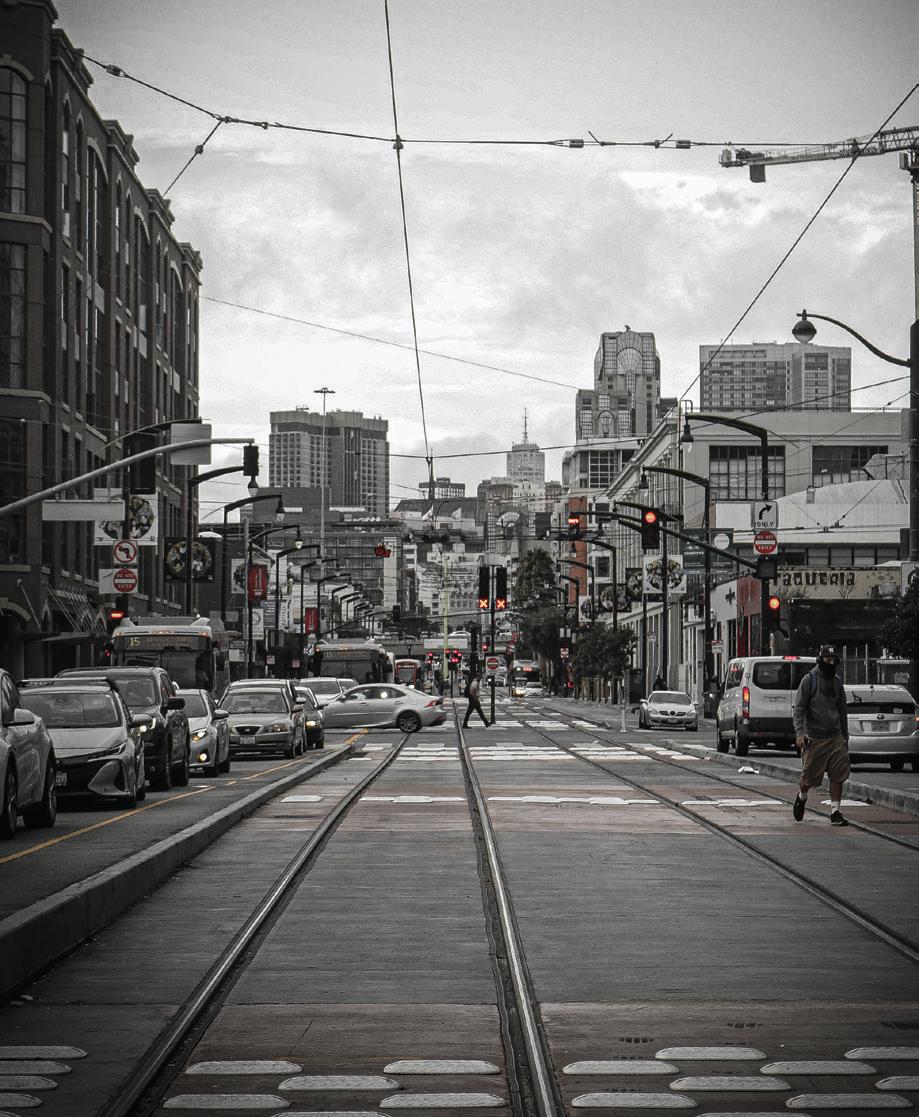
2. Use Free Software:



At first, the prospect of using Photoshop can be daunting due to its price and confusing interface. Adobe Photoshop is one of the most used image editing softwares but costs $60 a month. For many, this is too steep of a price, but when photographing, having a photo software is a necessity. Instead, there are free alternatives such as DarkTable and RawTherapee that can serve the same role as Adobe for free. Once you get accustomed to the free alternatives, you may find that the pricier software works just as well as its cheaper counterparts. It is also important to note that it takes time to understand the many different tools photoshop software has. Take your time learning how to navigate the software, and watch tutorials online if you ever encounter any roadblocks.
text by hadrien de martel & amani fossati-moiane summer 2024 6
on a Budget
3. Practice Composition:
Composition is an important aspect to good photography. Learn how to arrange different elements within your photos to guide the viewer’s attention to where you want it to go. Implementing key photo composition techniques can help elevate your photo from a bland image, to a photo that tells a story. A good way to improve your composition is by taking a class. For students, most schools will offer photography classes, and in these classes you can get an introduction to the subject and get advice from experienced photographers. Also, you can find professionally run courses online for relatively cheap. If these classes are still too expensive you can always revert back to Youtube. Thousands of talented photographers online post courses on youtube that anyone can watch for free. These courses are a great way to learn, and can help teach you how to master photography techniques.
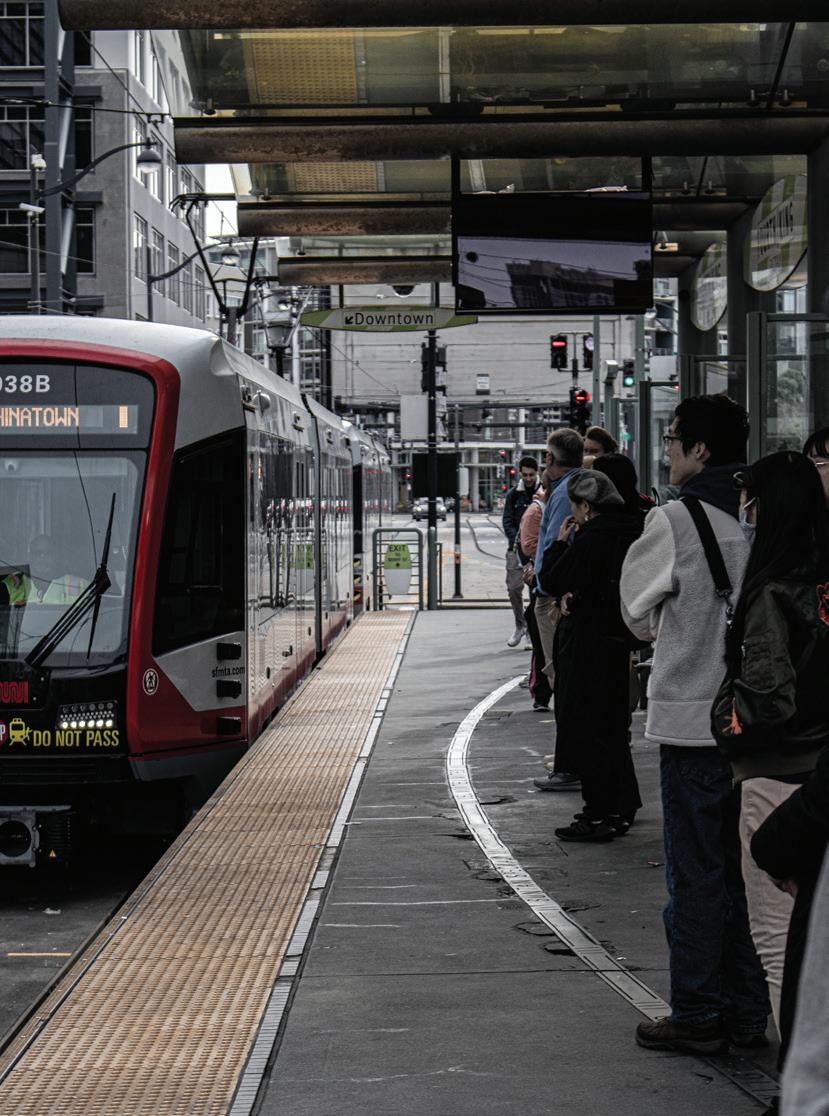

While it may seem obvious, the truth is people are quick to blame their equipment. The best way to improve your photography skills is not by upgrading your equipment, but rather taking as many pictures as you can. Learn what lighting works best, and which angles to take pictures from. One of the most famous sayings is practice makes perfect, and this is also true for photography. Get out, take as many pictures as you can, and it is almost certain that you will see progress.
4. Rehearse:
photos by benjamin patel
[proof] magazine 7

509 hale st.
the extensive past and architecture of a palo alto house
Walking on University Avenue above downtown Palo Alto, you see one home standing out amongst neighboring homes at the intersection of Hale Street. High ceilings and a nearly vertical roofline define its shape, making the house tower over surrounding fences and hedges. Despite a city boasting a rich architectural history, from mid-century modern to craftsman styles, 509 Hale St. stands out with its unique Queen Anne design. With elegant, classic lines to a variety of shapes and colors, this diverse structure reflects its vibrant past.
Dating back to the late 19th century, the history of 509 Hale St. is as interesting as its design. Sitting at the corner of Hale Street and University Avenue, the surrounding homes originally made up a four-home community and included a large stable, with this home being the main centerpiece.
said Palo Alto High School junior Heiren Noone, a house resident. “We used to live on the third floor when it [the house] was getting remodeled. There’s still a whole kitchen set and kind of office area that we just never use.”
Characterized by its exterior features, the house’s architectural design is timeless and sophisticated. Unique elements such as circular windows and a bay window add to its charm, drawing the attention of each passerby.
“I like the modern elements and how they act with the older elements,”
— Heiren Noone, junior at Palo Alto High School
According to the Palo Alto Stanford Heritage website, this home was built by T. H. Goodman for a mere $7,000 in 1897 and was called the Goodman House. Since then, the home has gone through renovations multiple times with previous owners of the home having maids working in and around the house.
“This is, I think, the third time we’ve remodeled this garden,”
“The brick is really prominent in a lot of older homes I see and the wood paneling too,” Noone said.
The two-and-one-half-story design coupled with the steep gambrel roof towers over neighboring homes. The staggered chimney positioned in front and center of the house curves to fit the triangular shape created by the roof.
“It [the house] is kind of tall and it’s very fenced off, so it seems kind of mysterious,” Noone said.
Despite Palo Alto’s ever-changing scene, this home holds onto its origins tightly. Listed on the Palo Alto Stanford Heritage website, it is described as “the finest example of its style in Palo Alto,” therefore being listed as a historic building.
“I think this house is really fun,” Noone said. “It has a lot of memories tied to it.”
text & photos by william xue
summer 2024 8
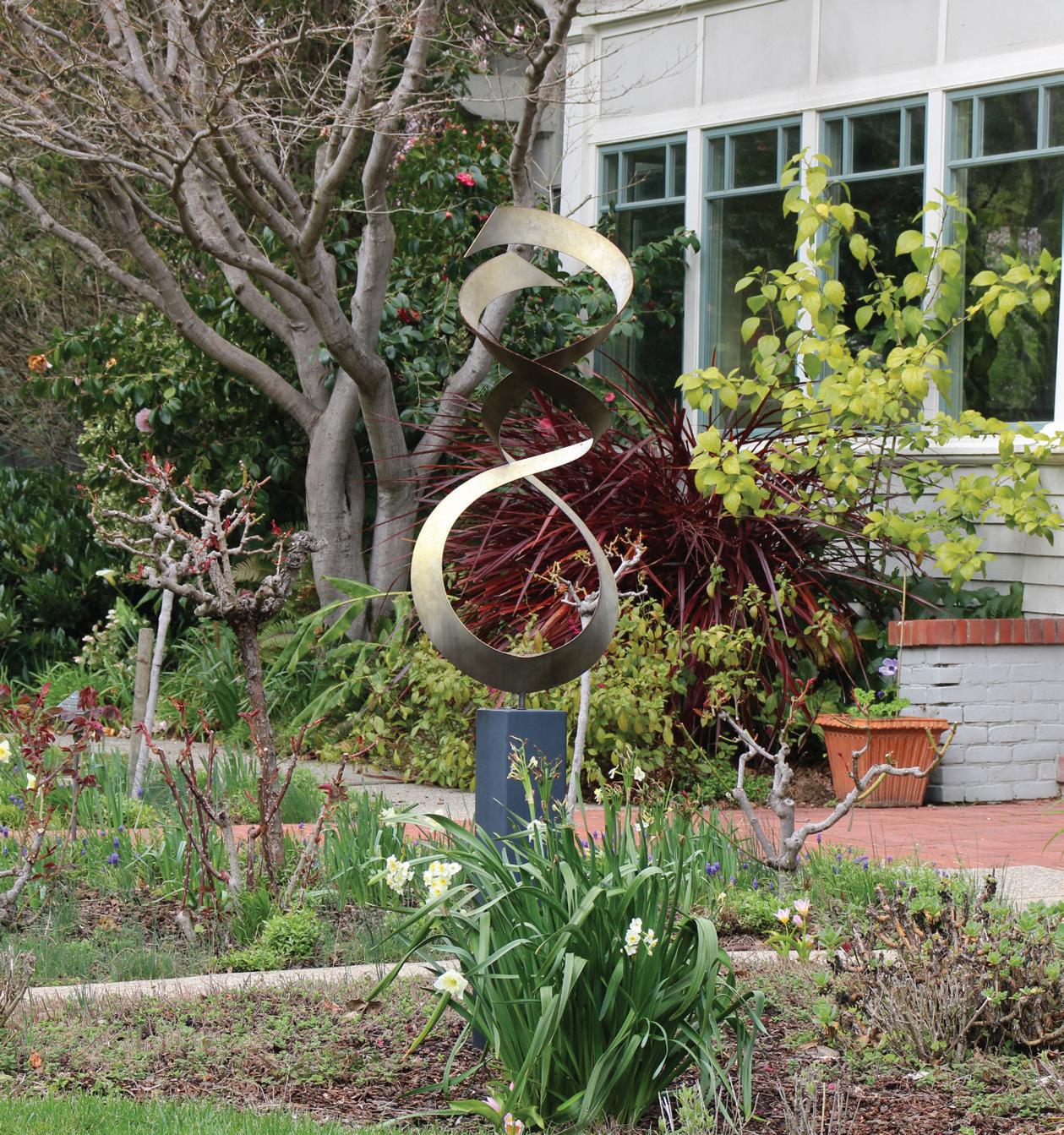

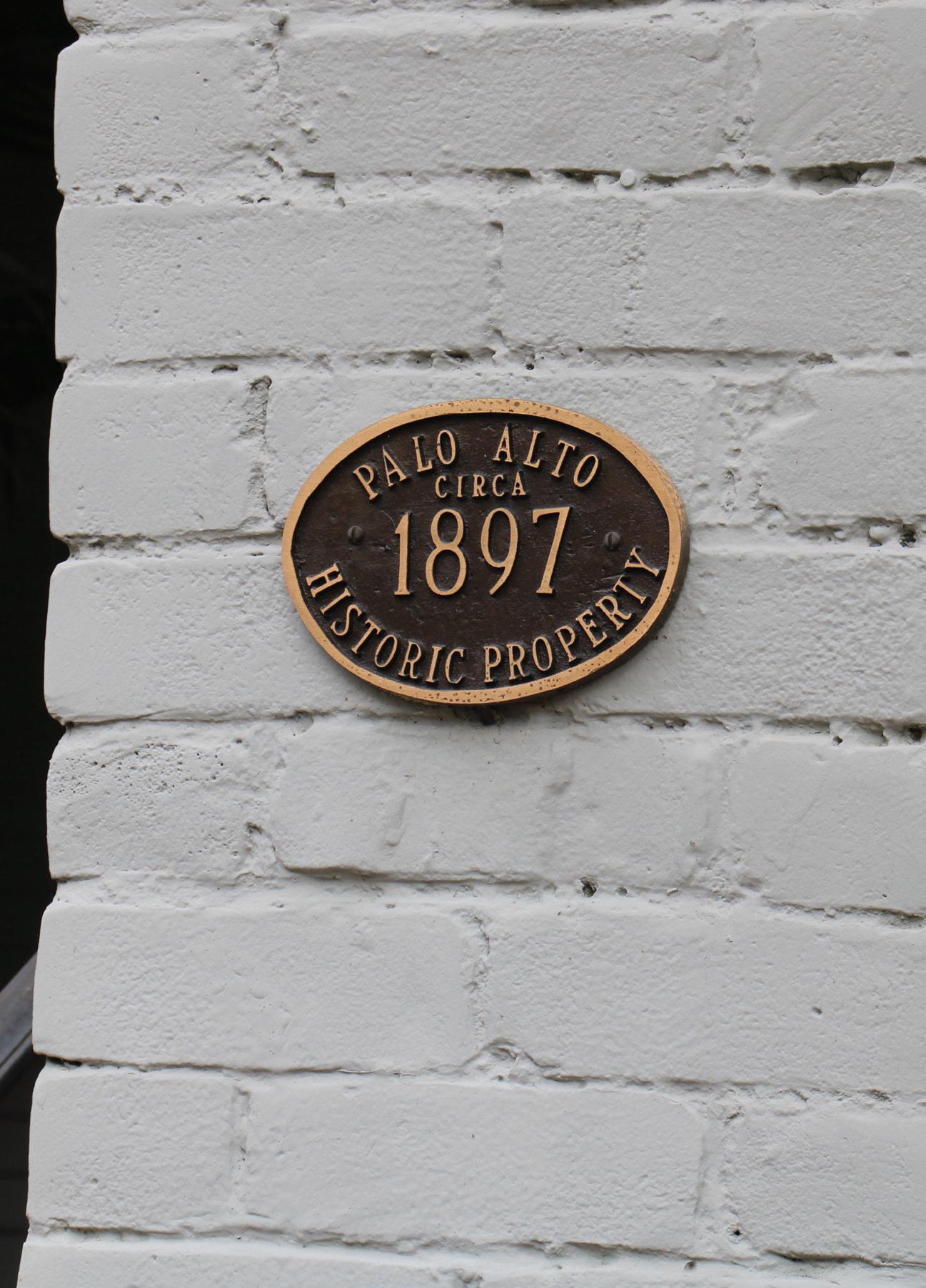

[proof] magazine 9
HUMANS OF PALO ALTO
Fabio Misawa, 47: Every year has new challenges. Raising my daughter for me was a challenge because the world keeps changing.
text & photos by amily zhang and william xue


summer 2024 10
Palo Alto attracts a vibrant and diverse group of individuals due to its blend of innovation and culture. Inspired by Brandon Stanton’s book Humans of New York, through photographs and personal narratives, Humans of Palo Alto showcases the unique stories of our community.

Danielle, 41:
It was a pretty big challenge to leave the research field since I love science so much. So it’s something I’ve been reflecting on a lot recently. I tell myself to not put artificial expectations on myself and that it doesn’t really matter in the real world. Just enjoy life. It could be over any day.

Francesca, 20:
Back when I was in high school, I dealt with a lot of insecurity. I moved to the Bay Area when I was in eighth grade, but I grew up in an underfunded educational district. When I first like moved here, I was struggling a lot to just do my schoolwork. I was specifically really bad at math because a lot of the peers around me were Olympiad kids and I just felt very slow and inadequate compared to them.
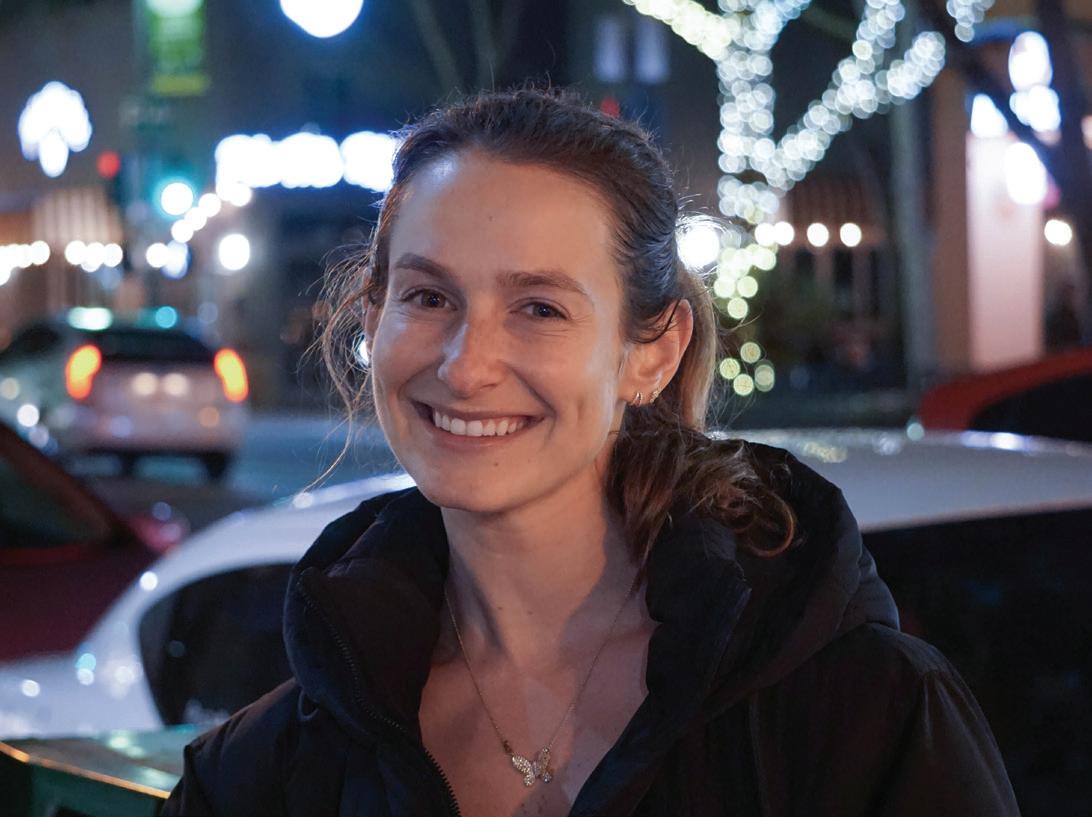
Annabelle, 29:
I’m irritated right now I just went to a bad yoga class. I’m ready to go home, I honestly don’t really want to be here. But that’s fine. Today is actually the 20th anniversary of my dad’s death. He died in a plane crash when I was nine, and my mom died two years ago from a heart attack. I just am grumpy right now because that workout was terrible.

Neil, 62:
There’s a lot of stress in this area, especially in schools and stuff, and this pressure to go into tech. The jobs tend to be pretty stressful. It’s competitive. And I’m actually trying to segue out of creative work into music. I’m doing film music now. I’ve had it up to here with with what I’m doing. I’ve done it so long, in so many places, that it’s hard to stay fresh. It’s time to switch tracks and have more fun. I’m doing film music now.
[proof] magazine 11
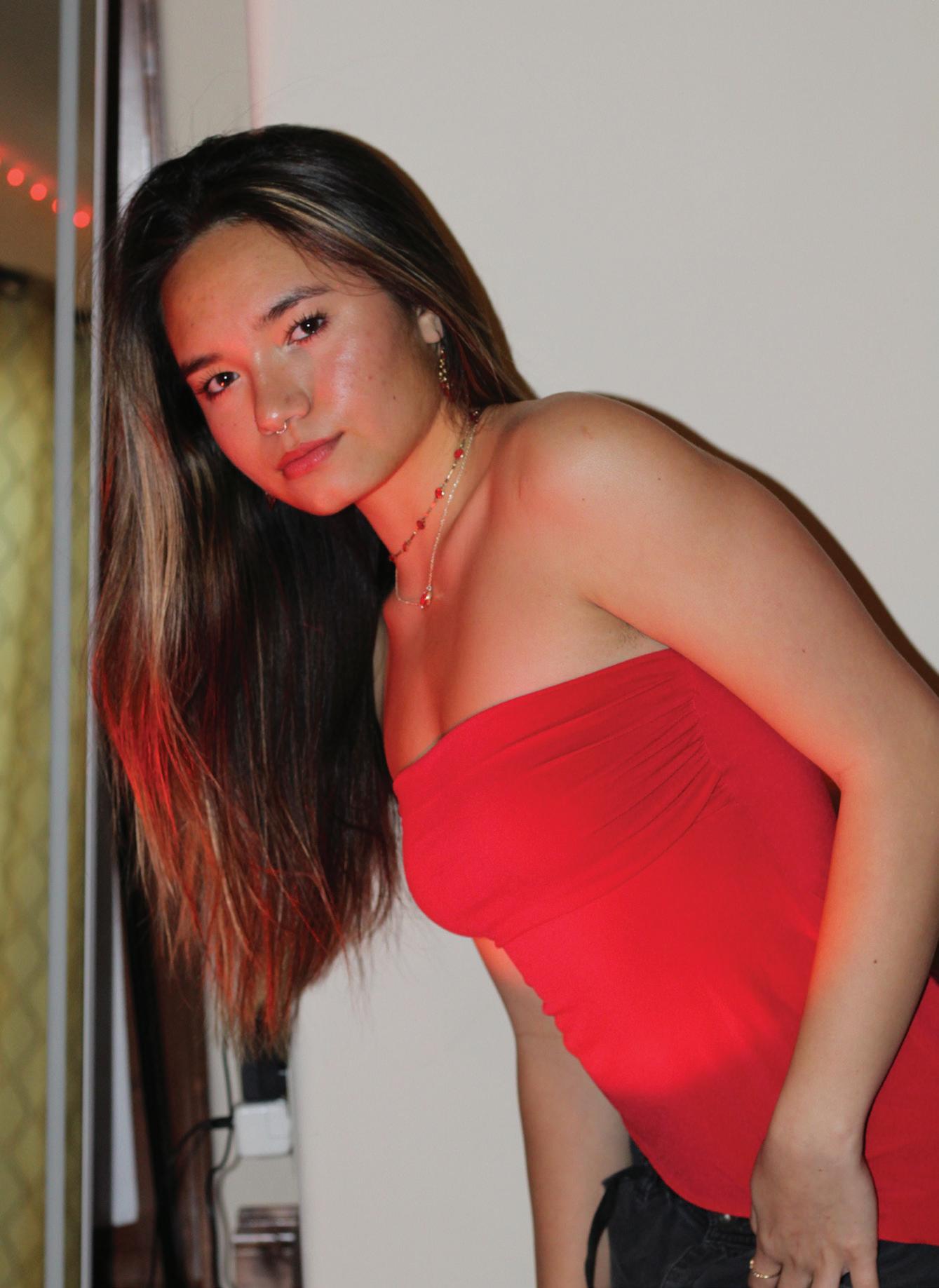 text & photos: kat farrell
text & photos: kat farrell

color theory
When you think of when you think of red, various connotations may come to mind: anger, love, power. This is the impact of color. Culture creates unconscious associations with color, and cinematographers have learned to use this to their advantage in all your favorite movies.
summer 2024 12
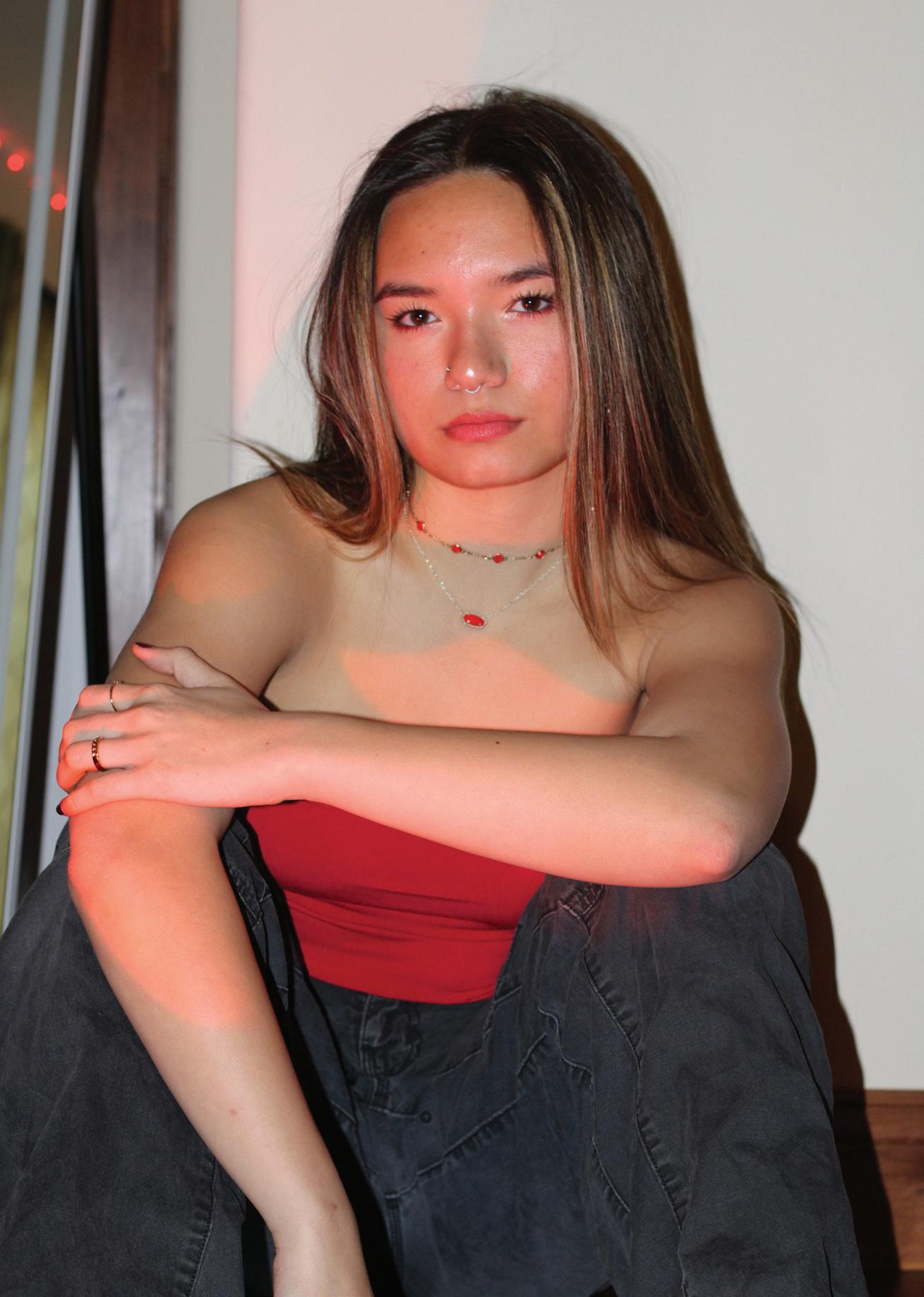
Culture creates unconscious associations with color, and cinematographers have learned to use this to their advantage in all your favorite movies.
While color can convey certain emotions, there are many different ways to interpret color without the added context of lighting, facial expressions, depth, and other cues.
Palo Alto High School’s photography teacher Kenna Gallagher said, “Color theory color is so, so useful and such a powerful tool to understand because it can be used in terms of hierarchy. You can specifically highlight, intensify, oversaturate, desaturate the rest and use color to come and draw the attention of the viewer.”
Hierarchy is a structure that ranks things in order of importance. Gallagher explains that like journalism uses a hook to draw readers in, photographers can use color to capture attention or divert attention and thus dictate what order the viewer sees their work

in.
“You can also use color to transmit like, or convey emotions and set a scene, give your image or your scenery a temperature, cold, warm or neutral.” Gallagher said.
The images above take advantage of the storytelling element. Palo Alto High School senior Cass Bui’s body language works in tandem with color and facial expressions to translate the idea and emotions behind the photograph; Bui is shown looking straight at the camera from a low angle, to ‘look down’ upon the viewer and display dominance.
However, color’s interpretation can vary depending on socio-environmental factors, Gallagher says, “You can get people to think a certain way about your product, art or thing that you’re utilizing color for depending on the thing people associated with that color. It varies from country to country depending on you know, the social structure and environment. Like sand
here, that sort of beige warm yellow sand color, [is] like a beach and having a good time and bonfires. Whereas, [when] you live in a swath of desert, I think it’s probably different association with that color.”
Another way to take advantage of color is through selective recoloring. This also contributes to hierarchy by drawing attention to chosen areas using pops of color or diverting attention by desaturating. However, it’s important to maintain a photo’s balance. “I prefer to see it done in a really subtle way. So it’s not like a completely black and white photo with one thing re-colored full saturation. I think balancing the saturation, and desaturation is a really important key to making your message. Clear without spilling like it’s screaming at you,” Gallagher said.
“It’s just endless how you can utilize color as long as you understand it, you’ve got way more power to intentionally build your artwork for a purpose.” said Gallagher.
[proof] magazine 13
text by mihika sridhar and cailey quita
Threads Through Time
Our fashion policies have changed over time
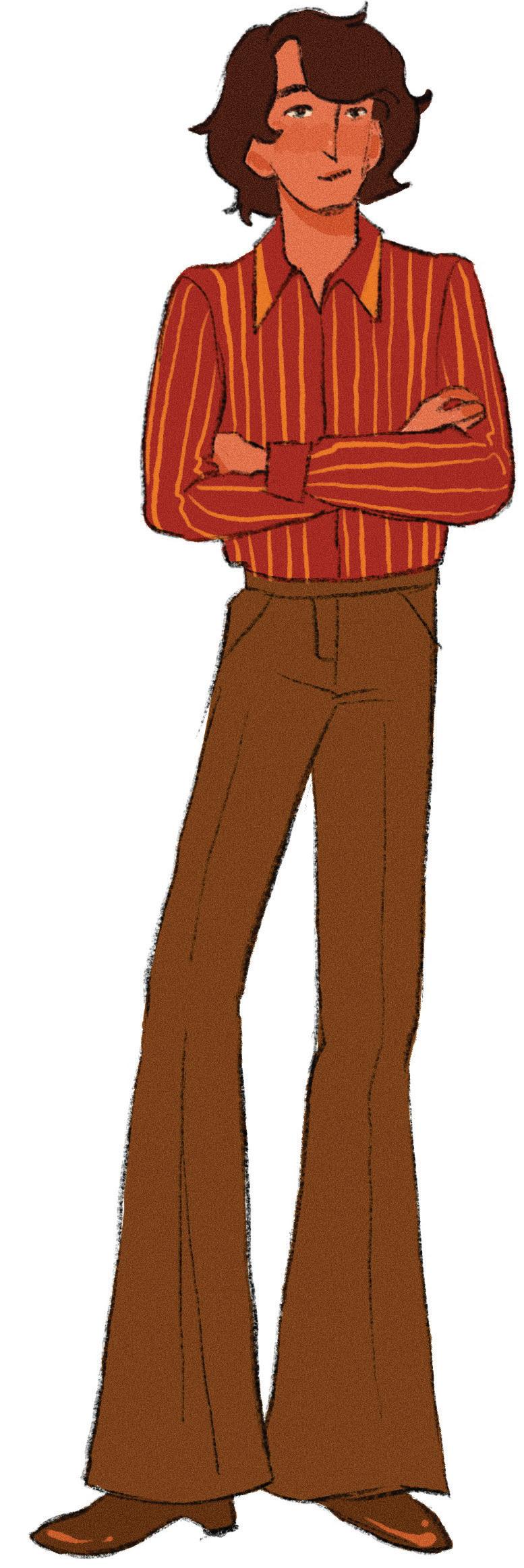
In 2011, former Palo Alto High School principal Phil Winston told Campanile reporter Lauren Wong “When butt cheeks hang out of shorts, it‘s inappropriate. Seethrough spandex tights, they gotta go. There‘s actually a dress code, did you know that? It was designed and created by students.”
Nicknamed “Chill Phil” because of his overly relaxed and jokester attitude, Winston resigned in June of 2013 “after three W of aggravating 25 complaints of sexual assault made by faculty members,” where former assistant principal Kim Diorio was faced with the harrowing choice of whether or not to come forward with the complaints that Winston had played a direct role in “cultivating a ‘sexually hostile environment”, according to a Verde article in 2017.
Winston was wrong about a lot of things, however, he was right about one thing: Paly has a dress code that is rarely enforced. As a result, students generally have the freedom to dress however they choose. It wasn’t always this way. In the past 129 years, Paly’s social norms, dress codes, and fashion trends have shifted dramatically.
now.
“I hate to say it, but I think [the style] stayed relatively the same,” Sabbag said. “I think there have been examples of creativity and flashing that I’ve seen. It’s very rare.”
A Campanile issue from April 1964 included information from the new dress bill passed by the State Legislature that year. As shorts became popular and acceptable in schools, a bill in the 1960s legislated student dress standards. The motivation for the bill came from the style of Bermuda shorts, which were at their height during the 1960s, and students wanted to be allowed to wear them at school.
Three years later, a Cam panile issue in October 1967 stated that the Palo
“I think there have been examples of creativity and flash ing that I’ve seen. It’s very rare.”
—Steve Sabbag, history teacher
Proof asked Paly math teacher and former Paly student, Young-Ju Lee, how student dress choices had changed from when she was in school.
“When I was in school, it was all about what brands you wore and it didn’t matter if it fit you well, or it suited you,” Lee said. “It’s more of like ‘Where did you buy that? Now, it’s all about you expressing yourself; whether it’s to pick up on the latest trends or if it’s just to wear whatever makes you feel the most comfortable. So, I think there’s a lot more diversity in the way that students dress now.”
Steve Sabbag, history teacher and alum, said that when he went to school, people dressed the same as they did
Alto School district’s “three basic ideas are: (1) For young women; shorts, slacks, beach wear, and active sports wear are not appropriate. (2) For young men: cut-offs, beach wear, and active sportswear are not appropriate. (3) Shoes: some form of footwear must be worn. Each school would

summer 2024 14
have the freedom to define terms such as ‘footwear’ and ‘active’ sportswear.”
“Some principals think teenagers will wear anything unless it is forbidden. I prefer very general standards rather than specific rules,” former Palo Alto High School principal Ray Ruppel told The Campanile. “No restrictions on long hair will be created. Girls will be allowed to wear slacks at Paly’s home athletic events. Palo Alto is one of the few districts to allow this.”
Another dress code event happened in 2005, but it had a very different outcome from the Bermuda Shorts incident. According to an Oct. 10, 2005, issue of The Campanile, there was a debate over how much is too much when dealing with specif-
Amendment, and both students and staff started looking at this event through the eyes of the Tinker v. Des Moines Supreme Court case. The case featured three teenagers peacefully protesting regarding the Vietnam War by wearing black armbands to their public schools and were told by school officials that they, and anyone else who joined the protest had to remove them, or face suspension. This case gave public school students protection under the First Amendment.
With self-expression comes opinions, both good and bad. A Campanile issue from March 14, 2011, debates the relaxed restrictions that still exist today.
“When you wake up in the morning and ‘get dressed,’ actually get dressed, leave the pajama pants, sweats, and oversized T-shirts at home,” journalist Lauren Wong said. “We understand you want to be comfortable, and that you might be a bit rushed in the morning, but you can set your alarm five minutes earlier and put on some real clothes.”


During Paly’s Spirit Week of 2005, the senior class wore shirts during Spirit Week stating, “We’re higher than you” with a subtle marijuana message behind it. The administration shut it down, threatening with serious consequences if worn at school. However, the seniors who had made the shirts argued that it shouldn’t have been such a big deal, which brought up the question of whether the shirts affected learning
This situation raised concernsing the First
The Paly Student Handbook now states: “Appearance and dress must be within the limits of decency, cleanliness, and appropriateness for school, and shall not interfere with teaching and learning. … Any clothing advertis ing or displaying alcohol, illegal sub stances, or activities and all gang-relat ed apparel is strictly prohibited.”
Nowadays, students are seen wearing various clothes with a diversity in style. In the current cold weather, the most common outfits worn are sweaters and hoodies paired with jeans, sweatpants, or pajama pants. Contrastingly, as the weather heats up, dresses, skirts, shorts, and crop tops will regain their popularity.
School dress codes could result from the latest fashion trends and what teens are into, which have shifted over the years. For example, trends have shifted from the 1970s hippie style to the 1980s bold neon choices, and the 1990-2000s subcultures of grunge, chic, preppy, and punk.
The lax rules and no uniform choice mean students, in essence, can wear almost anything they want. While some see this as their choice to be creative, others use it to see just how far they can go without getting in trouble.
“I think as long as you are choosing attire you would be able to wear to any place,” Lee said. “If it’s versatile enough to bounce between situations with out feeling like ‘Oh, maybe this isn’t gonna be appropriate [for this event]’, then I feel like you can wear what you’d like.”

[proof] magazine 15
art by polina van hulsen
‘Saltburn’ Cinematics
A look into Emerald Fennells’ hit movie and its visual symbolism.
Emerald Fennells’ psychological thriller “Saltburn” has grossed $21 million since its release on Nov. 17, according to Box Office Mojo. “Saltburn” has garnered mixed reviews, with Rotten Tomatoes describing it as “A thing of grotesque beauty and sublime wit.” Junior Kaliope Hendershot, president of the Film Club at Palo Alto High School, was also impressed.
“I really liked it [Saltburn], I thought the beginning and the middle was good,” Hendershot said. “The end is just what throws me off because I just feel like it had so much potential to be something philosophical.”
The film follows the intricate friendship of Oxford students Oliver Quick (Barry Keoghan), who comes from a troubled family, and Felix Catton (Jacob Elordi), a wealthy man who suffers from many psychological issues as a result of his complex family dynamics. After the two become close, Oliver confides in Felix about his financial situation, which leads to Felix inviting him to his summer estate, Saltburn. The visit leads to a tumultuous turn of events as Oliver becomes fixated with Felix’s eccentric family and estate, constructing a plan to acquire the estate resulting in the whole family’s death.
“I just think it [Saltburn] is great,” Williamson said. “I think the story is well done. …It’s really cool how much visual symbolism she [Fennell]uses.”
Fennell specifically uses visuals to foreshadow a significant amount of the plot, hinting to the audience what’s to come.
“There’s some really cool foreshadowing that happens in the film,” Williamson said. “She [Fennell] does a lot of visual stuff to show the characters are going to die.”
“I honestly think that we needed ‘Saltburn’ right now because I feel like we need more weird movies”
— Kaliope Hendershot, Junior and President of Film Club
The usage of intertextuality was seen with the character of Felix, who dies by a champagne bottle poisoned by Oliver, the foreshadowing of this hinted at the series of deaths that were about to occur.
At one of Olivers’ first meals at the Saltburn residence at the table Felixs’ sister Venetia (Alison Oliver), tells the story of poet Percy Shelleys’ doppelganger. According to Venetia, Shelleys’ housekeeper saw Shelley walk past a window and wave, as the housekeeper waved back she realized she was on the top floor and Shelley was in Italy. Shelley drowned hours later.
While the plot and acting of the movie leaves room for criticism, one aspect has remained consistently appreciated — the cinematography. The movie was filmed with a 4:3 aspect ratio, with the images being 4 units wide and 3 units tall.
To compare, a typical movie is filmed with a 16:9 ratio, with the images being 16 units wide and 9 units tall. The result is a voyeuristic feeling as the audience feels like they are spying on the events of the movie, making us feel like outsiders similar to Oliver.
“It gives you the impression of peeping in, and that’s kind of what this is,” Fennell said in an interview with Vanity Fair. It’s a doll’s house and we’re all kind of peeping in, scrabbling to get in.
Film composition teacher Alanna Williamson says she loves the movie and how it uses visuals to tell the story.
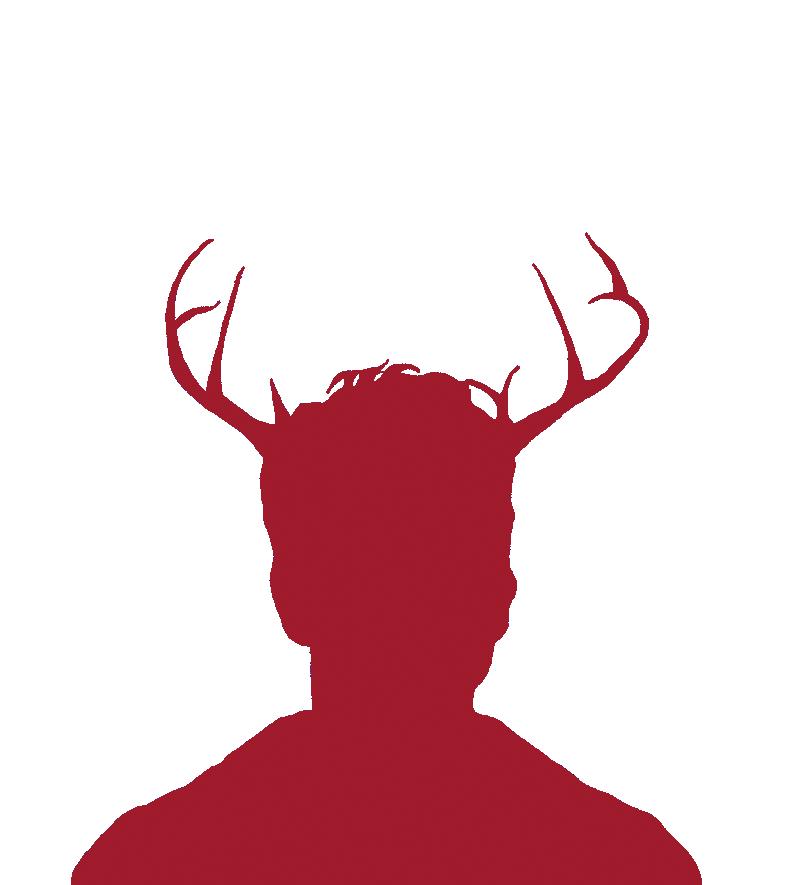
As Venetia tells this story Felix’s doppelganger walks past the window wearing the exact same outfit Felix was wearing in the moment, foreshadowing his imminent death.
Following Felixs’ death, his sister Venetia dies of self-inflicted wounds due to the emotional distress of losing he“At the same dinner table later on, after he [Felix] has died, his sister [Venetia] is sitting there with the wine and it’s overflowing and it kind of mimics the blood that comes later,” Williamson said. “And then she chokes on something, which is like mimicking how she dies.” Hendershot discussed the significance of having movies like Saltburn.
“I honestly think that we needed ‘Saltburn’ right now because I feel like we need more weird movies” Hendershot said. “Like if it gives someone else out there the confidence to be able to say like I have this really messed up idea that I want to like go out there and create art about I would love to see that.”
by saanvi
joshua
art by amani fossati-moiane
text
garg and
watterson
summer 2024 16

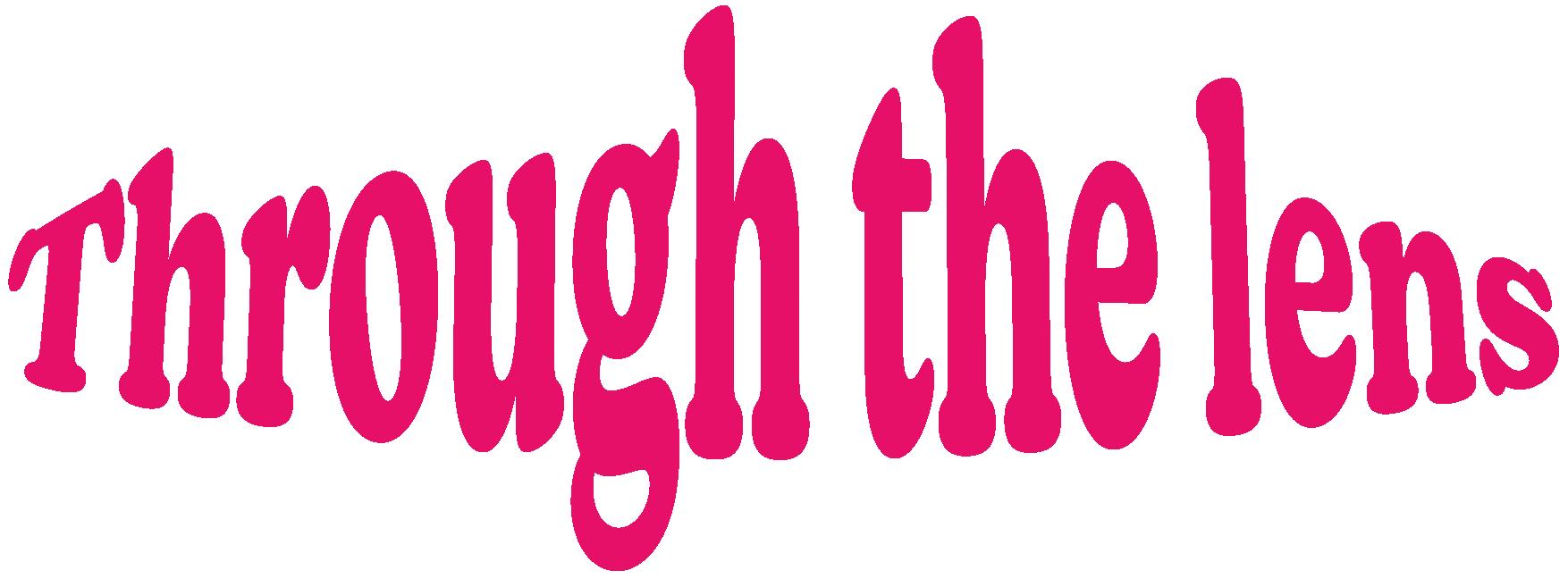
Iommonly used in street and skate photography, the fisheye lens takes photos with a wide angle view using a convex lens to create distinct distorted images, creating an immersive effect due to the ultrawide image created by the lens. The lens distorts straight lines, shown in the periphery of the image. text & photo by amani
Exposure on how different lenses serve distinct functions
n a world where the art of photography is evolving, the choice of lens can alter the story that a picture tells. There are three lenses that stand out for their unique contributions: The tilt lens, zoom lens, prime lens and fisheye lens. The fisheye lens takes photos with a very-wide angle mainly used for underwater photography and skate videography. The tilt lens typically used in panoramic and landscape photography is. The zoom lens allows for a greater versatility in focal distances.
TChe zoom lens is great for all distances, allowing you to zoom-in and out without having to physically move. This is appropriate for any photography with uncontrolled surroundings or long shooting day where grabbing a lens from the bag or running to get everything in frame could be the difference between getting the shot or not. This makes them favorites of wedding photographers, small creators, and wildlife photographers.
The tilt lens is used to change or shift the plane of focus, allowing photographers to control the depth of field and focus plane independently from the camera’s orientation. This enables creative effects such as ultra-shallow depth of field or making large landscapes appear miniature, as demonstrated by the ultra shallow focus in this image. This is often used by architecture photographers.

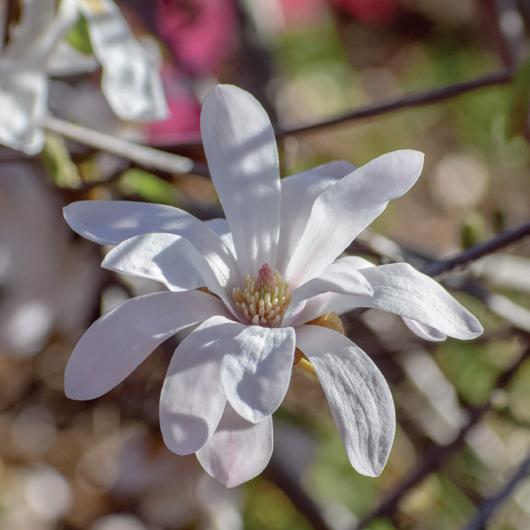

[proof] magazine 17
fossati-moiane & arjun jindal
student art gallery
We received many high-quality submissions to the gallery for this issue. Email proof.paly@ gmail.com or visit the link in our Instagram bio (@proof.magazine) to submit for our next issue in spring 2024!

 lucas tung
lucas tung
summer 2024 18
alexander lawson


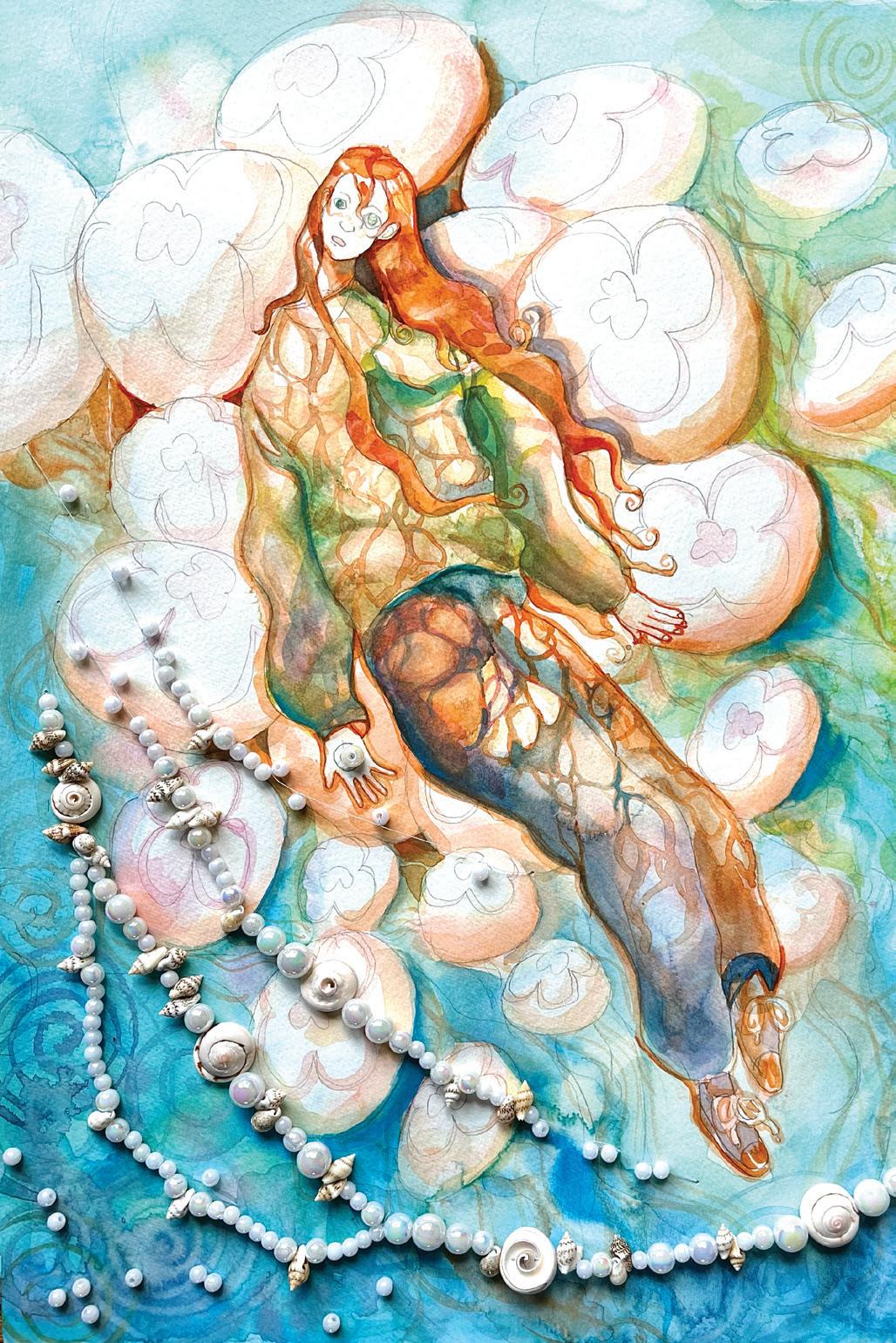 renny argast
renny argast
kim [proof] magazine 19
alexander lawson kofi
























 text & photos: kat farrell
text & photos: kat farrell















 lucas tung
lucas tung


 renny argast
renny argast
